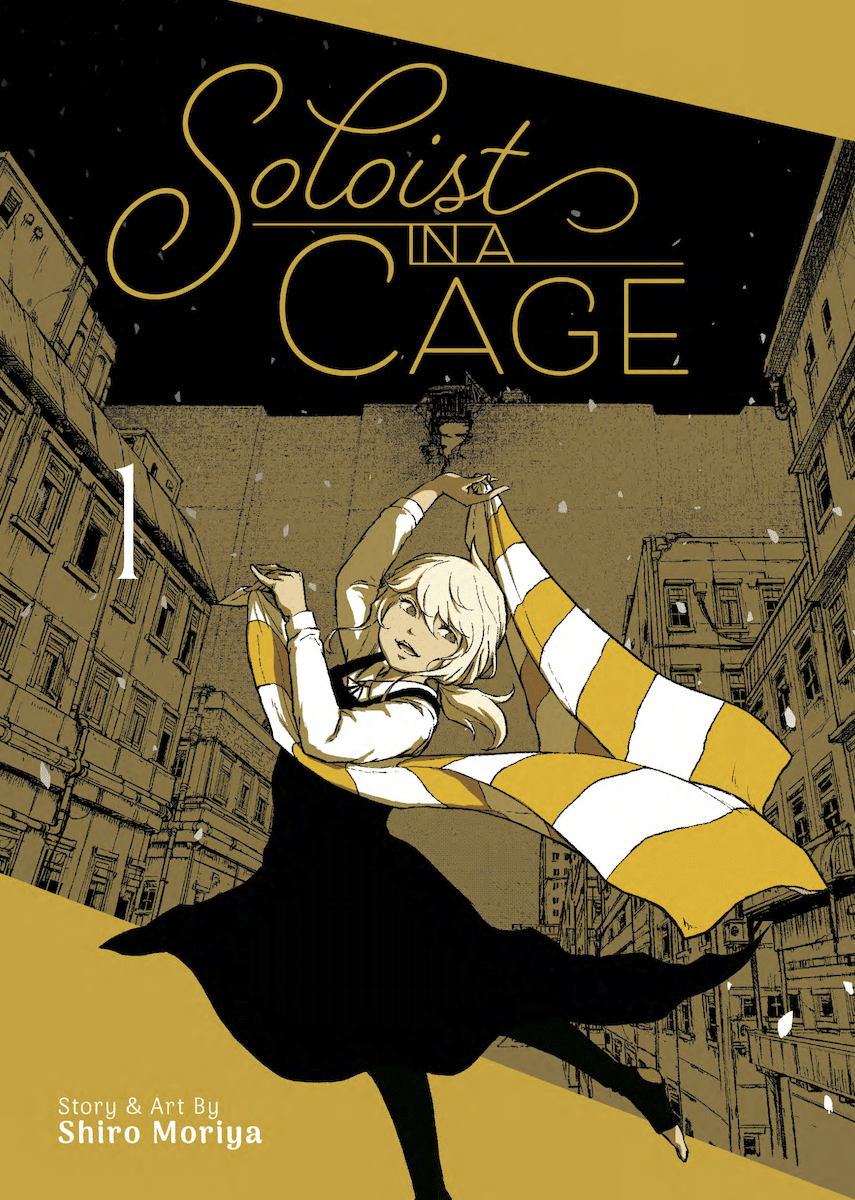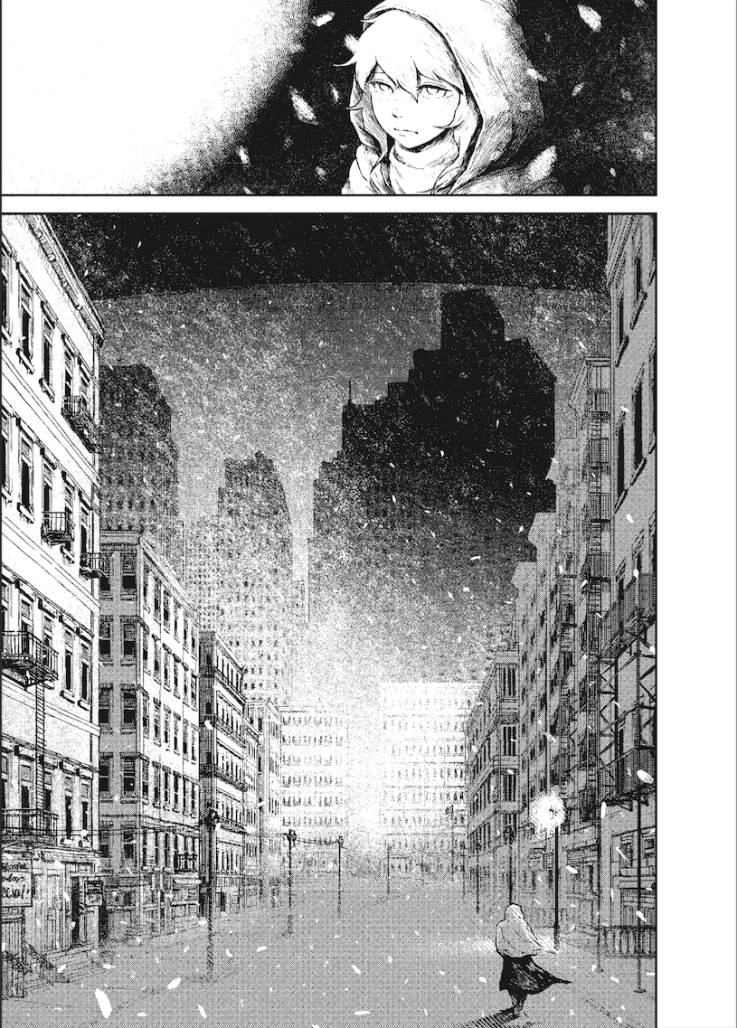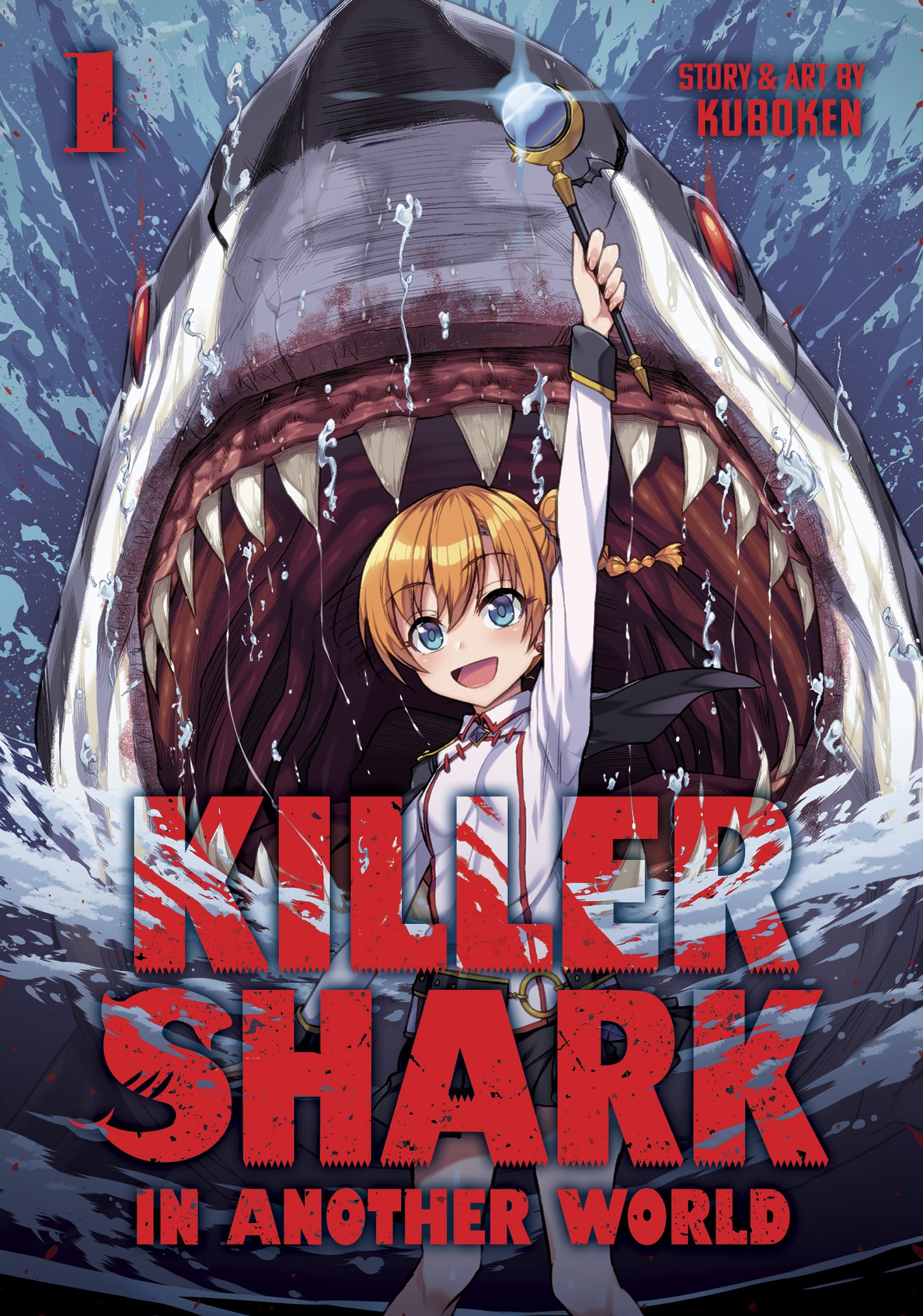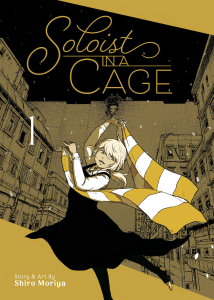
Writer/Artist: Shiro Moriya
Translator: Adrienne Beck
Lettering: Viet Phong Lu
Publisher: Seven Seas Entertainment
Genre: Sci-Fi, Action
Science fiction at its best creates entire worlds with just a few sentences. The genre transports readers into entirely new worlds, whether it’s an alien landscape or a world five minutes into our future.
Soloist in a Cage, the debut series by writer/artist Shiro Moriya, opens with a splash page of a massive city. Moriya draws a massive wall and door in the foreground and fences surrounding the first blocks of buildings. The captions on the first page state “Prison City. A city where all prisoners are housed. Once you’re in, you’ll never get out.” Even without the beautiful drawing, those sentences tell you all you need to know about the world of Prison City. It is a place whose residents only leave through death. Moriya uses this dystopian setting to pose hard moral questions to both his characters and his readers.
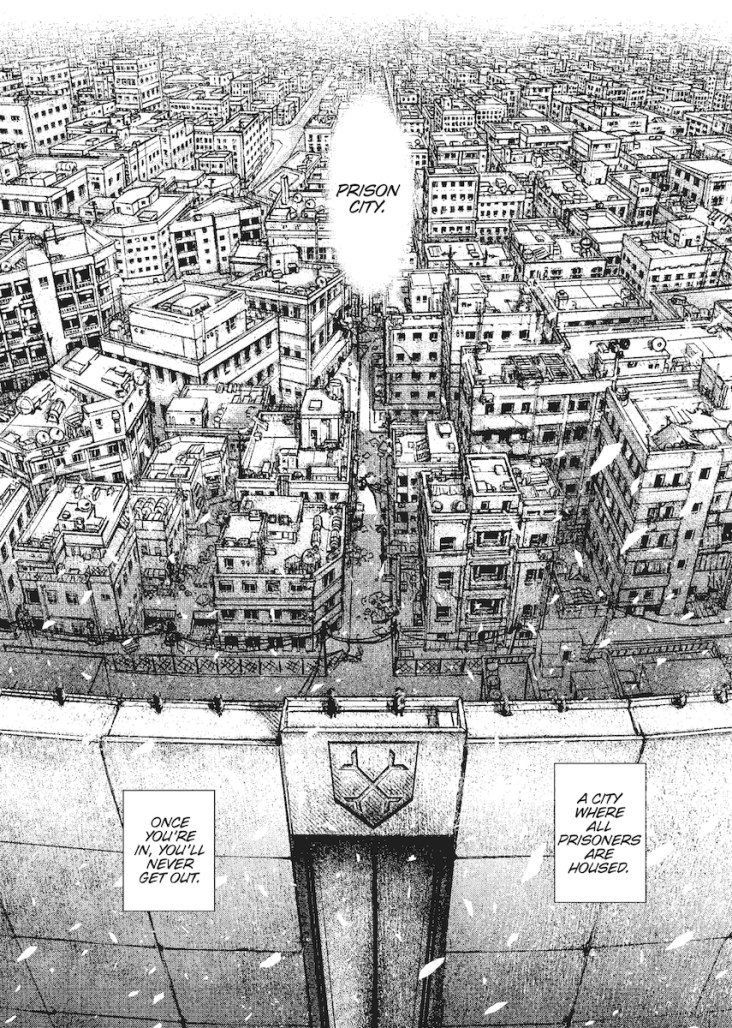
The world of Prison City is, as put by Werner Herzog, every man for himself and God against all. This is a city where altruism can get you killed. The people who now live here are all criminals. The type of criminal does not matter; bread thieves to murderers to prisoners of war all live there. It’s not a city where because of a common situation the residents choose to live harmoniously. Instead, Prison City is a lawless place. When people enter, they’re automatically sized up. Walking the street can get you killed. As long as people don’t try to escape what happens in the city is not the business of the wardens. They only care about people escaping.
No one has escaped Prison City. There’s an unclimbable perimeter wall surrounding it and the featureless Yes Men, robot guards, patrol and shoot anything at the drop of a pin. However, a combination of a hole in the perimeter wall and a snowstorm allows a small group to escape.
In that group is seven-year-old Chloe. During the escape, she accidentally leaves her baby brother Locke in Prison City. Twelve years later, an older Chloe returns to get Locke out no matter what she has to do.
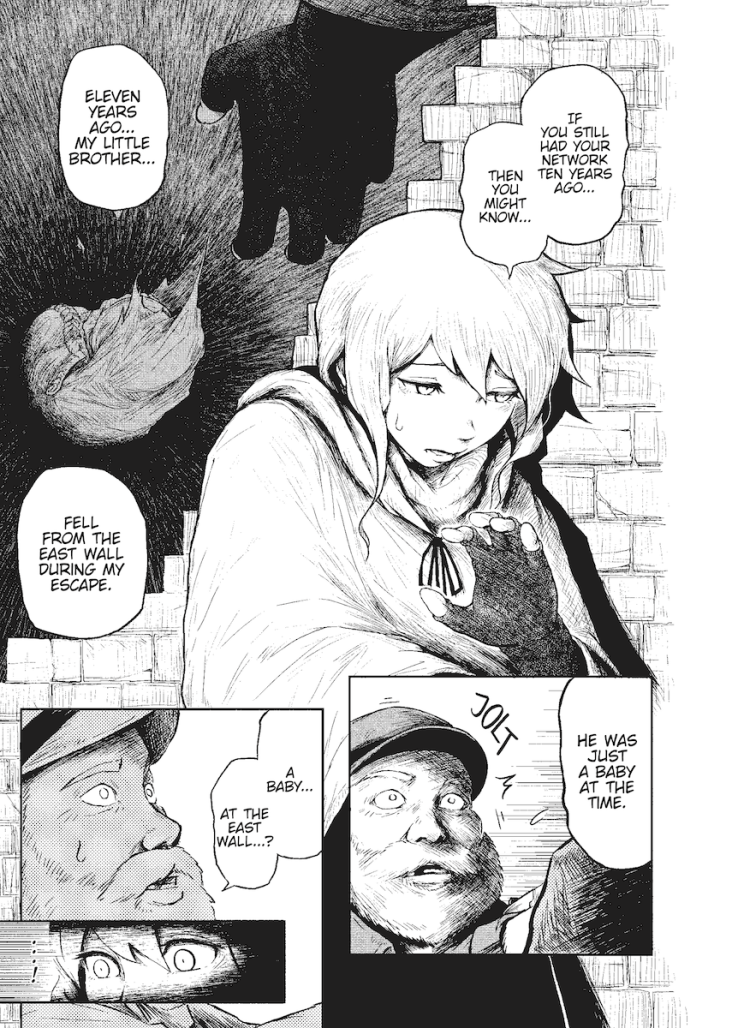
Most storytellers would be content with telling a story about getting anyone out of Prison City. So many of them focus on the details and preparation for the escape or the philosophy of the people trapped in an inhospitable place. The idea of a prison-like city where no one has successfully escaped would be enough for some storytellers. However, Shiro Moriya finds possibilities in the people who live in this hellword. Some revel in the “freedom” of no consequences to their actions. These are the prisoners who attack the weakest of the newcomers or random people walking the streets at night. Others try to get by selling goods or information to protect themselves. Of course, some are trying to make this a better place. They may not be successful, but their morals won’t let them stand by while evil happens.
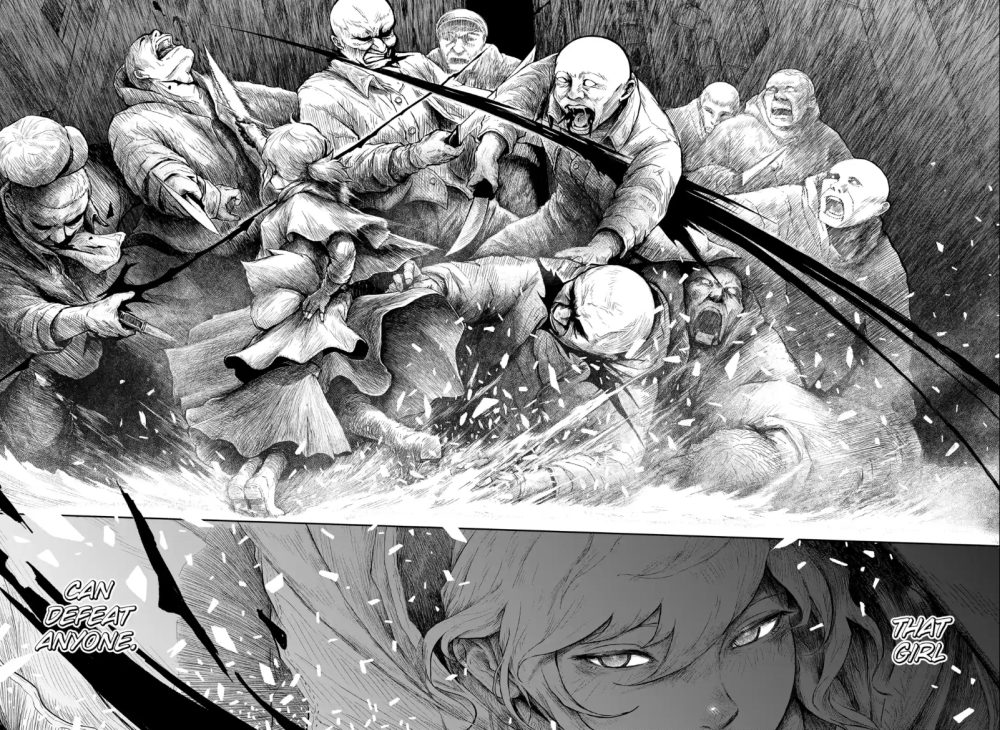
Moriya’s greatest narrative choice though is in having Chloe return to Prison City and exploring either the insanity or courage of her choice to return to that nightmare. He spends a good chunk of the first half of Volume 1 detailing that his young protagonist Chloe knows how dangerous her home is. This is a person born in Prison City and who knows its inhumanity. She returns because she made a promise to protect her brother no matter the cost. The Chloe that returns is no longer a glowing if determined child but a cold, reluctant killer. She kills because she must protect herself and find her brother. Her determination and her flexible morality clearly will help her achieve this goal, no matter how bloody a path she carves.
As an artist, Shiro Moriya is a revelation. This is a newcomer drawing with immense confidence and skill. Their line work is astonishing. Moriya loves capturing shadows in beautiful cross-hatching. The lines modulate between furious, delicate scratching to thick, inky outlines on some of their characters. They come from a tradition of artists like Katushiro Otomo (Akira) and François Schuiten (The Obscure Cities) who live to render their cities in exquisite detail.
The buildings tower over the characters. Readers are constantly aware of place in the panels with Moriya rarely leaving a background blank except for effect. They compose panels with an overhead bird’s eye view or pitched from above to remind readers everyone here is being watched. With their detailed drawings and an eye for composition, Moriya turns Prison City into a fully realized world.
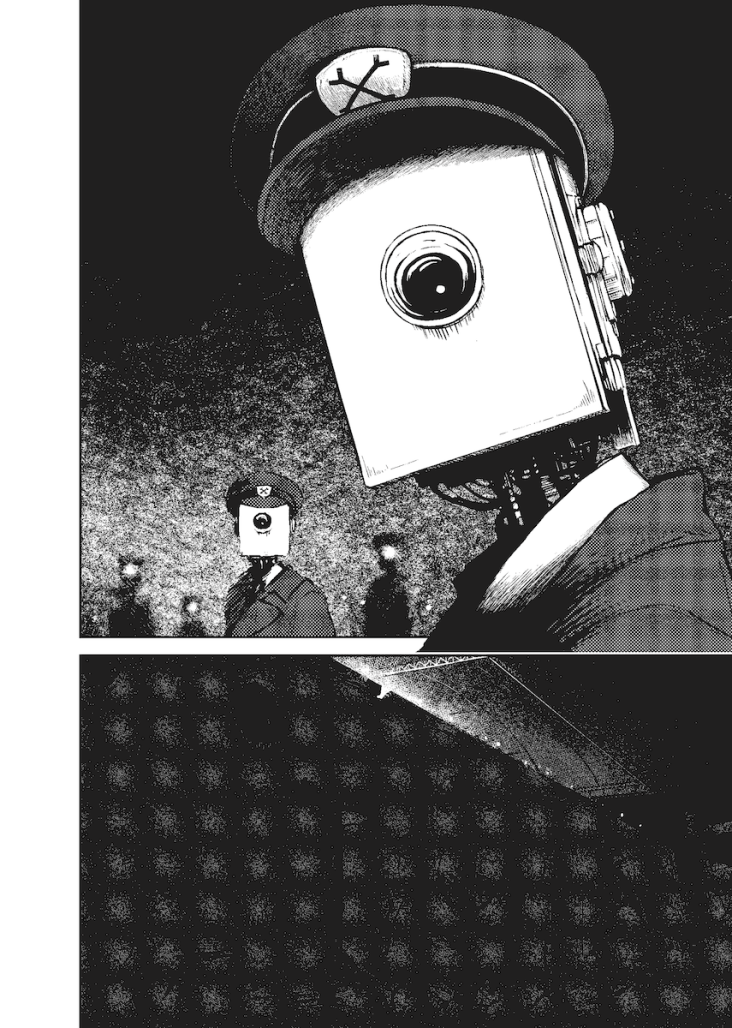
Even more impressive is the obvious care Moriya puts into their character work in Soloist in a Cage. They may favor a more realistic style but never render figures in ways that look stiff. They love giving a rhythm to Chloe’s movements, whether she’s dancing with her brother or moving with grace as she brutally kills opponents.
Each character is drawn with an internal life, whether it’s the cheerful optimism of the young thief Toriko or the various murderers and criminals Chloe encounters. Maybe the most terrifying creation of Moriya is the Yes Men, the robotic policemen that watch Prison City’s perimeter wall. The Yes Men are dressed like officers, but their faces are simply one camera’s eye. They’re always shown mid-frame with no expression of body language. It’s really hard to make faceless robots seem scary, but there are genuine chills anytime the Yes Men are on the page.
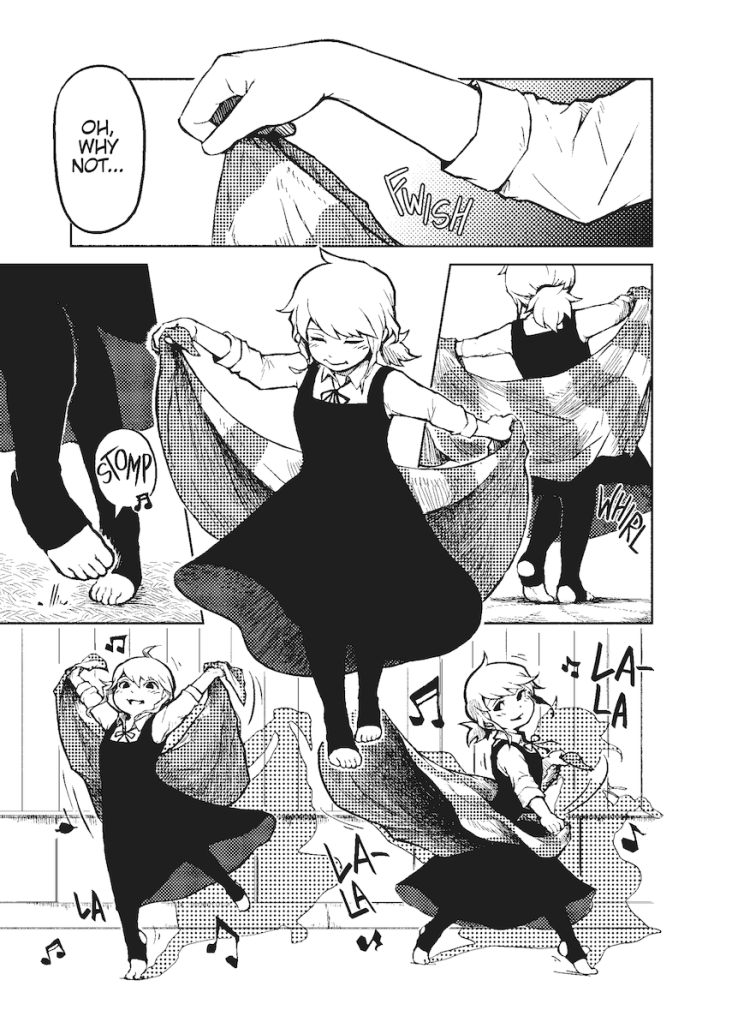
The first volume of Soloist in a Cage is the debut of a confident new talent. It’s a story that seems familiar but goes in surprising directions. Visually, it’s one of the best-looking comics to see release last year. Shiro Moriya demonstrates considerable skill and command of the comic medium. Who knows what they’ll do next?
Soloist in a Cage vol. 1 is currently available from Seven Seas Entertainment.


